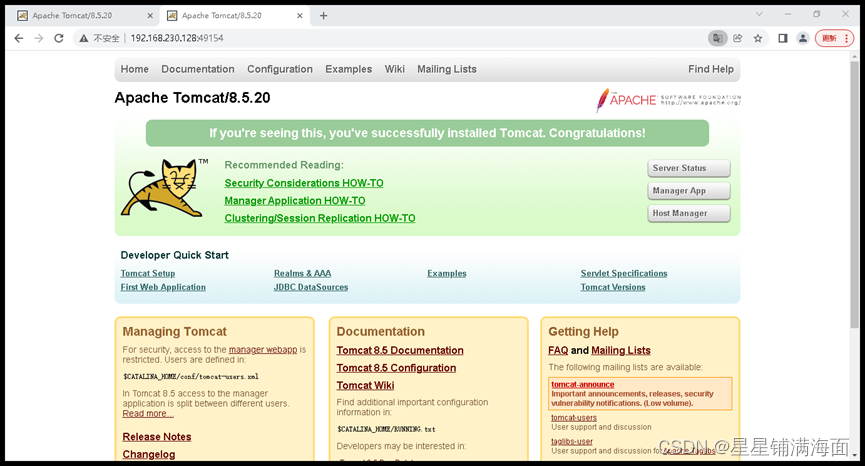1.字符串的原始字面量
表达式:R"xxx(原始字符串)xxx"或者R"(原始字符串)",xxx要写的话,必须一样
//两种申明形式
string a = "aaa";//没有转义的时候就是原始字面量
string b = R"aaa(bbb)aaa";//申明为R"xxx()xxx"
string c = R"(ccc)";//申明为R"()"
string d = R"aaaa(ddd)aaaa";//申明为R"xxx()xxx"
cout << a<<b<<c<<d << endl;意义:避免字符串中有转义字符时出现转义的问题,解决字符串过长(字符串写在多行中)而不想使用连接字符(\)的问题
//避免转义
string str = "hello\word\ttt";
string strR = R"(hello\word\ttt)";
cout << str << endl<< strR << endl;
string str2 = "hello\\word\\ttt";
cout << str2 << endl; //解决字符串过长(字符串写在多行中)而不想使用连接字符(\)的问题
string str = "dsfhk\
dsfklhj\
dsklfhjsd\
<sd>\
sdfkgjyhk\
dsfg\
dfsgf\
dsrfgdrf";
string strR = R"(dsfhk
dsfklhj
dsklfhjsd
<sd>
sdfkgjyhk
dsfg
dfsgf
dsrfgdrf)";
cout << str << endl << strR << endl;2.用户指定的字面量(自定义后缀)
operator"" xxx


3.指针空值类型-nullptr
在C程序中,NULL表示(void*)0;在C++程序中,NULL表示0
void func(int a) {
cout << "func(int a)" << endl;
}
void func(char* a) {
cout << "func(char* a)" << endl;
}
//调用
func(10);
func(NULL);
func(nullptr);
C++中void*不能隐式转换成其他类型的指针
void* a = NULL;//NULL为0或者void *
int* b = NULL;//NULL为0或者void *
double* c = NULL;//NULL为0或者void *
char* d = NULL;//NULL为0或者void *
nullptr不能匹配类型;可以隐式的匹配指针类型,不能匹配类型。
void* ptr = nullptr;//nullptr隐式转成void*
int* test2 = nullptr;//nullptr隐式转成int*
double* test3 = nullptr;//nullptr隐式转成double*
char* test4 = nullptr;//nullptr隐式转成char*4.常量-constexpr
c11之前的const有两个意思,修饰常量与变量只读
constexpr修饰常量表达式
常量变达式:多个常量(值不变)组成,且在编译过程中得到计算结果的表达式,达到提高程序执行效率的结果
定义常量const与constexpr是等价的,们都在编译过程得到结果
//定义常量时,const与constexpr是等价的
const int c = 33;//常量达表式
const int d = c + 1;//常量达表式
constexpr int h = 45;//常量达表式
constexpr int k = h + 3453;//常量达表式对于C++内置数据类型可以使用constexpr修饰,使用class与struct自定义的数据类型不能使用constexpr修饰
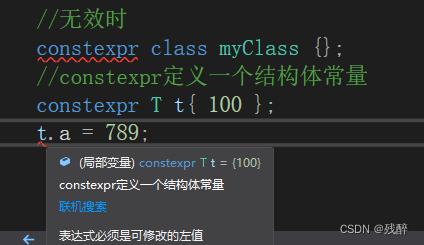
常量表达式函数:constexpr修饰函数返回值的函数(普通函数、类成员\构造函数、模板函数),发生在编译阶段
常量表达式函数要求:
1.函数必须有返回值且返回值必须是常量表达式
2.函数使用前必须有对应的定义语句
3.整个函数体,不能出现常量表达式之外的语句(return除外)不能出现如using、typedef、static_assert断言、循环等
4.使用前必须先定义
5.几乎只有一个return语句(极少数除外)
//常量表达式函数
constexpr int funConstexpr3() {
constexpr int a = 9;//a为常量
return a;
}
//constexpr修饰模板函数,会根据传入参数类型确定是否为常量表达式函数
template <typename TT>
constexpr TT display(TT t) {
return t;
}
//constexpr修饰构造函数,函数体必须为空.初始化必须为成员初始化列表
class MyClass3
{
public:
constexpr MyClass3():h(67) {}
int h;
};在C++中建议把const与constexpr区分(即表示“只读”使用const,"常量"使用constexpr)
常量表达式的为类的构造函数时,函数体必须为空;必须使用常量表达式来给初始化列表赋值
5.静态断言static_assert
C语言的assert在运行阶段,对断言进行检查。条件为真,执行程序;条件为假,执行about()
C++的static_assert在编辑阶段对断言进行检查。

6.noexcept修饰符
代表函数不能抛出异常,抛出异常就报错(使用noexcept答题throw())
//函数不能抛出异常,抛出异常则报错
void test_noexcept1() throw() {
//throw 2;
}
//函数不能抛出异常,抛出异常则报错
//C++11用noexcept代替throw()
void test_noexcept() noexcept {
//throw 1;
}7.强类型枚举
在enum后面加struct或者class修饰,使用时必须加上作用域;并且可以指定成员变量的类型
//一般枚举
enum MyEnum{OK,Error};
//“test_enum::OK” : 重定义;以前的定义是“枚举数”
//enum MyEnum1{OK,Error};
//强类型枚举
//在enum后面加struct或者class修饰
enum class MyEnum3 { OK, Error };
enum struct MyEnum4{OK,Error};
//使用时必须指定哪个作用域
//MyEnum3 flag = OK; //error
MyEnum3 flag = MyEnum3::OK; //使用时必须加上作用域
//可以指定成员变量类型
enum class MyEnum3 :char{ OK, Error };
enum struct MyEnum4 :int{ OK, Error };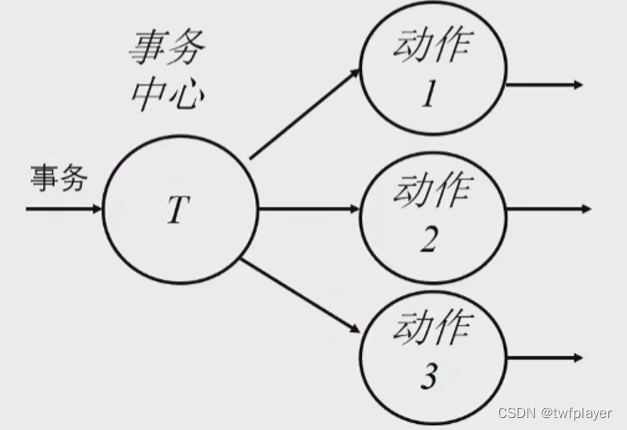



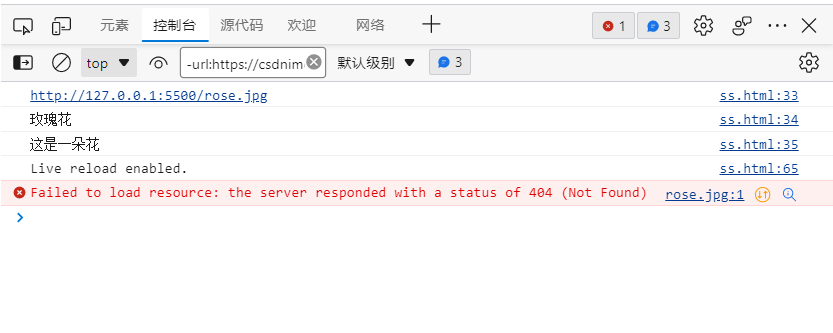

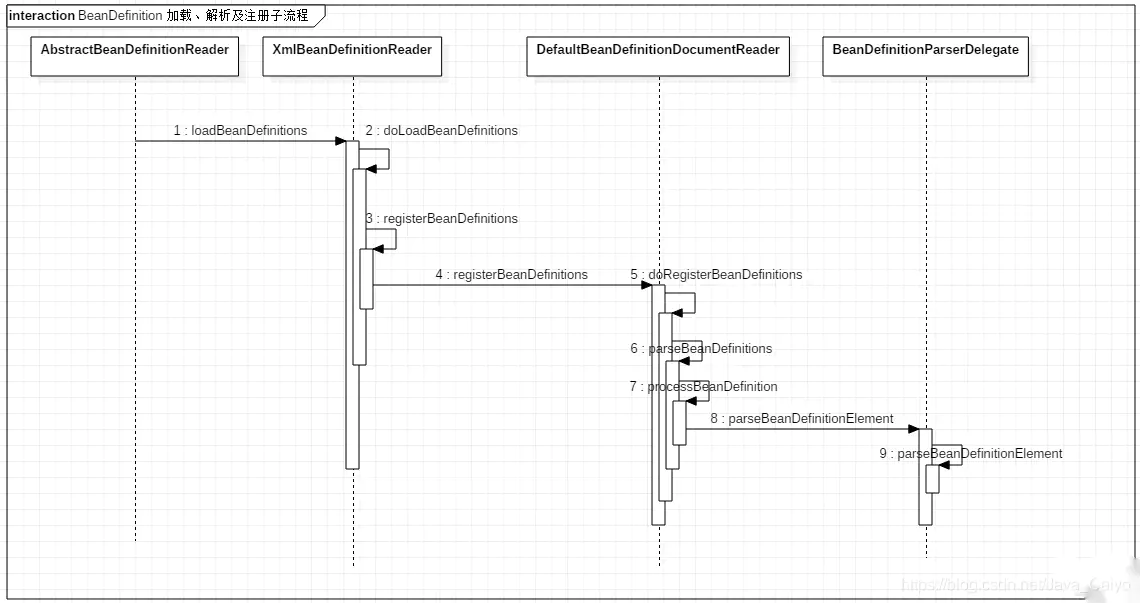

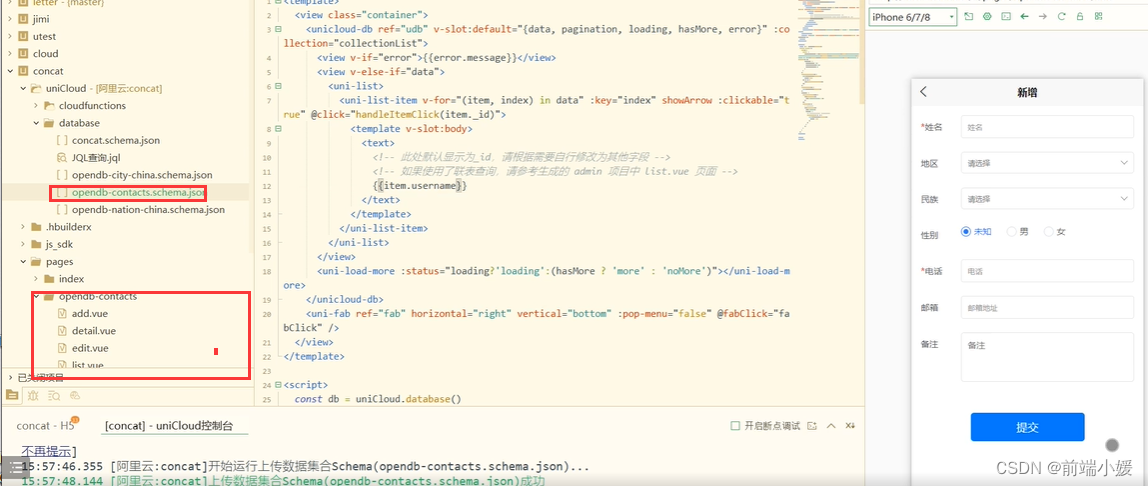
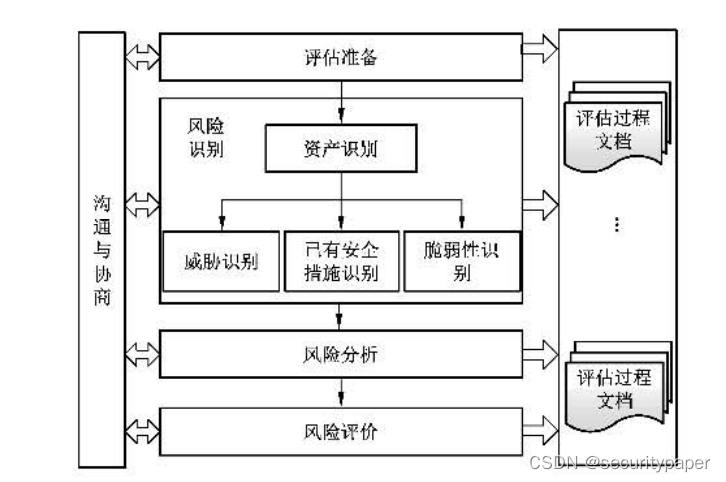
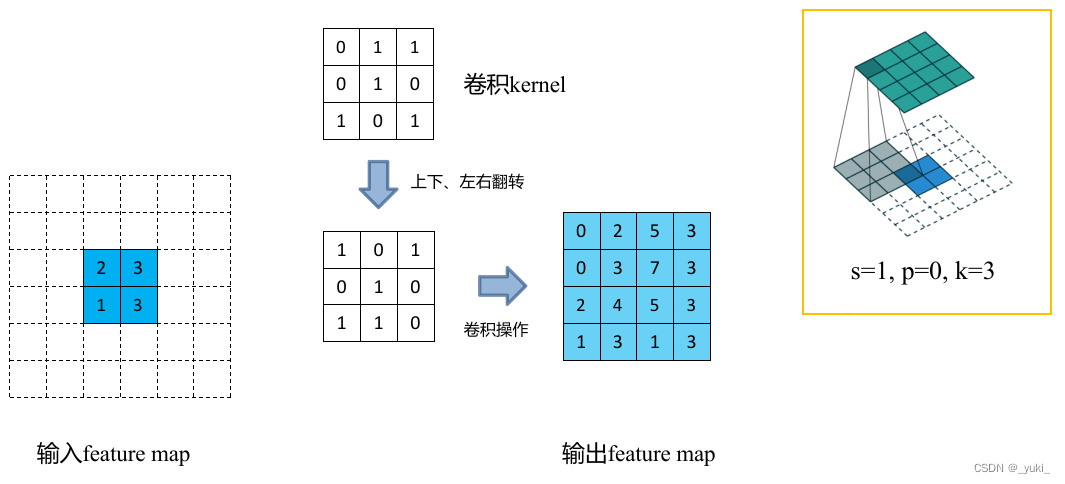




![[附源码]计算机毕业设计四川景区管理系统Springboot程序](https://img-blog.csdnimg.cn/b652b83f467f44a2b20acbd594029eb3.png)

![[附源码]Python计算机毕业设计SSM教师教学质量评价系统(程序+LW)](https://img-blog.csdnimg.cn/020e71a2a1234d83906f67ec0aac7bc7.png)
